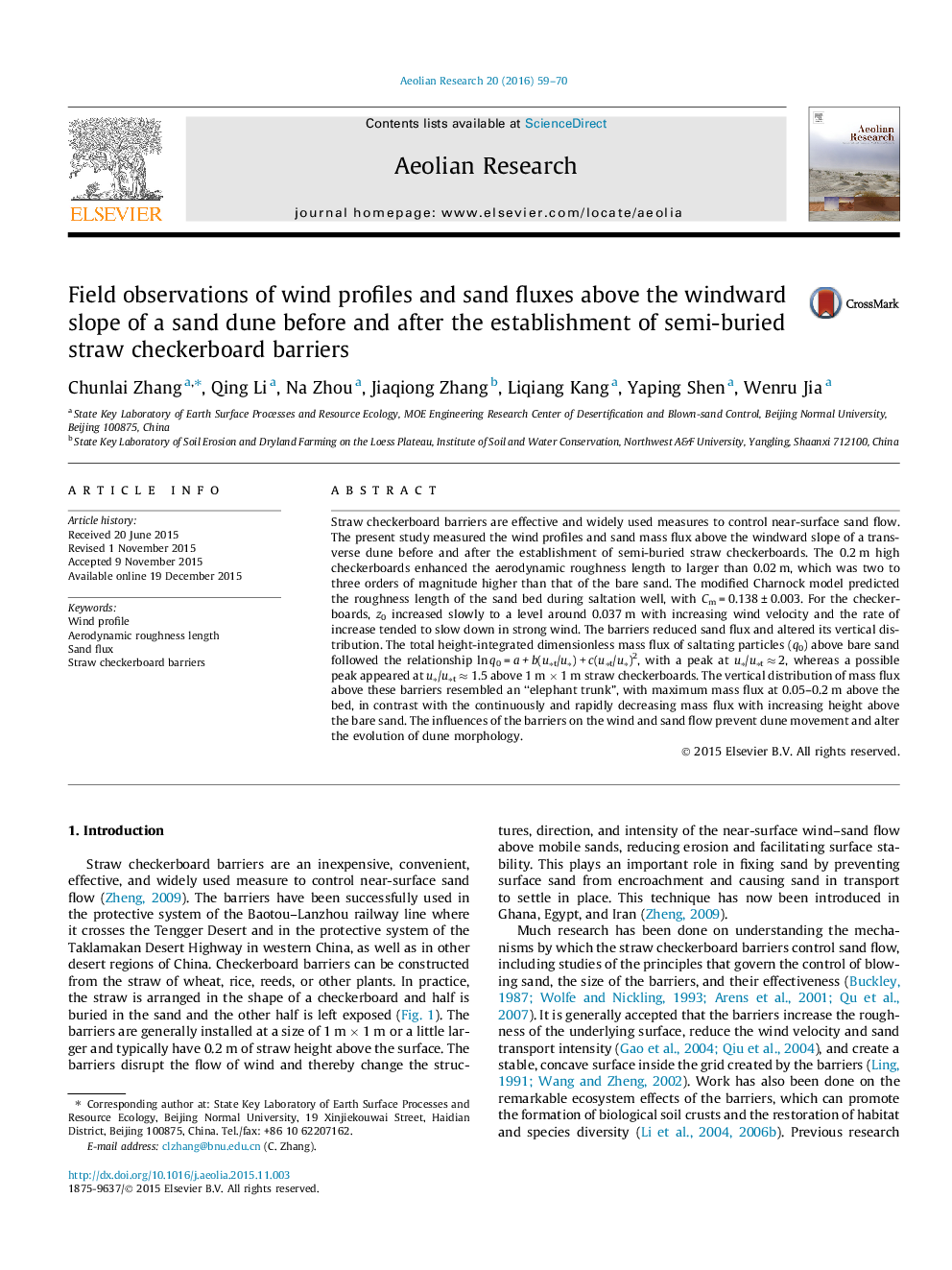| Article ID | Journal | Published Year | Pages | File Type |
|---|---|---|---|---|
| 6426248 | Aeolian Research | 2016 | 12 Pages |
â¢z0 on the straw changed with wind speed in different ways from that on bare sand.â¢The barriers lessened sand flux and altered its vertical distribution patterns.â¢The vertical distribution of mass flux above the barriers resembled an “elephant trunk”.â¢The modified Charnock coefficient Cm is 0.136 ± 0.002 for the bare sand.
Straw checkerboard barriers are effective and widely used measures to control near-surface sand flow. The present study measured the wind profiles and sand mass flux above the windward slope of a transverse dune before and after the establishment of semi-buried straw checkerboards. The 0.2 m high checkerboards enhanced the aerodynamic roughness length to larger than 0.02 m, which was two to three orders of magnitude higher than that of the bare sand. The modified Charnock model predicted the roughness length of the sand bed during saltation well, with Cm = 0.138 ± 0.003. For the checkerboards, z0 increased slowly to a level around 0.037 m with increasing wind velocity and the rate of increase tended to slow down in strong wind. The barriers reduced sand flux and altered its vertical distribution. The total height-integrated dimensionless mass flux of saltating particles (q0) above bare sand followed the relationship ln q0 = a + b(uât/uâ) + c(uât/uâ)2, with a peak at uâ/uât â 2, whereas a possible peak appeared at uâ/uât â 1.5 above 1 m Ã 1 m straw checkerboards. The vertical distribution of mass flux above these barriers resembled an “elephant trunk”, with maximum mass flux at 0.05-0.2 m above the bed, in contrast with the continuously and rapidly decreasing mass flux with increasing height above the bare sand. The influences of the barriers on the wind and sand flow prevent dune movement and alter the evolution of dune morphology.
